Press release
Kathmandu june 5 The Asian Development Bank (ADB) has appointed ICIMOD to act as one of three technical implementing partners in a major initiative designed to transform climate and disaster risk reduction in the Hindu Kush Himalaya region.
ICIMOD collaborates with ADB, engineering firm BGC, and a Swiss consortium supported by the Swiss Agency for Development and Cooperation on $6.52M initiative to build resilience in mountains.
‘BARHKH’ initiative will harness regional and local best-practice alongside Swiss expertise in disaster risk reduction, as minimal damage from last week’s glacier landslide disaster in Alpine village Blatten proves impact of Alpine approaches.
Initiative aims to build permanent capacity and increase access to investment and training to save lives and protect infrastructure in vulnerable mountain rang.
ADB’s Building Adaptation and Resilience in the Hindu Kush
Himalayas (BARHKH) initiative, launched in December 2023, with a total of $6.52 million funding for its first phase, $450,000 of which goes to ICIMOD, seeks to reduce the human and economic risks from the rising intensity and number of climate-induced mountain hazards in the region, including floods, landslides, and glacial lake outburst floods (GLOFs).
Switzerland, through the Regional Climate Action Partnership in the Hindu Kush Himalaya, has contributed CHF 2 million ($2.4M) to the BARHKH initiative. In addition, Switzerland is bringing in its decades-long expertise in climate change and disaster risk management through a range of Swiss institutions, including those from the private sector and academia. This collaboration aims to build on global knowledge and enhance regional capacity.
The initiative also seeks to cut the costs of disaster risk reduction for individual governments, promote climate resilient investments, and strengthen community resilience by developing shared data, systems on multi-hazard risks and multi hazard early warning systems, and with improved access to training, knowledge and finance.
The initiative sets out to build permanent regional capacity in interventions that address a spectrum of hazards, from floods, debris flows, landslides, glacial lake outburst floods to permafrost thawing.
nterventions will range from identifying disaster hotspots, reducing exposure, by using multi-hazard risk assessment to inform climate resilient investments, to ramping up early warning for early action, building impact-resistant infrastructure, insurance solutions, and increasing the effectiveness of operations, maintenance and finance plans.
In its first phase, which runs till October 2028, BARHKH focuses on Bhutan and Nepal. Phase two will focus on operationalisation, and scaling the initiative to additional countries, and sectors in the Hindu Kush Himalayan region.
”Our warming world is unleashing devastating hazards in our mountains. Even advanced economies are being stretche-we must act now to scale proven solutions across the HKH and we hugely applaud ADB for this initiative,” states Saswata Sanyal, Disaster Risk Reduction Lead at ICIMOD and Project Coordinator for BARHKH for ICIMOD.
”The escalating costs of disaster management and mitigation make it imperative for agencies and governments within and beyond our region to come together like never before – to ensure as many people and sectors as possible benefit from the best innovations and systems and techniques, at the lowest cost. We’re delighted to be among the technical advisers whose insights will advance disaster management and lower risk in this region.”
ICIMOD’s participation in this project was confirmed just days ahead of the opening of the Global Platform for Disaster Risk Reduction (GPDRR), the key fora for disaster risk experts to share knowledge, discuss development and trends. This year’s event, which closes tomorrow (6 June) is hosted by the Government of Switzerland.
”Mountain communities around the world, from the Alps to the Andes and the Himalayas, are threatened by increasing intensity and frequency of mountain-related hazards. Their lives, ways of life, culture, and heritage are all threatened,” the UN Office for Disaster Risk Reduction wrote in a statement in response to the glacier landslide which struck Switzerland last week.
”This tragedy could have been much worse if not for the quick actions of Swiss authorities, who provided early warning to the village’s residents and evacuated them, and their livestock, days ago. This is a testament to the power of disaster risk reduction in reducing loss of life and protecting livelihoods. Over the decades, the Swiss have developed significant expertise in managing mountain-related disaster risks and have been generously sharing it with countries across the world.
”With the hazard pattern changing so significantly with temperature rise, disaster management in the HKH is not yet where it needs to be,” said Declan Magee, Principal Economist and Team Leader BARHKH for ADB. “Huge knowledge exists in this region, and beyond it. This is a first crucial step towards pooling that knowledge base and technical expertise, building the appropriate capacity and leveraging the right investment and planning guidance to save lives, and safeguard economic development.
The press released has published in own authentic portal of ICIMODE. Nepal’ Offices.
Blog
-

Asian Development Bank (ADB) has appointed ICIMOD to act as one of three technical implementing partners
-

The third pressures are on Europe’s ground and surface water, lack of concrete action
Jan Plagge, President of IFOAM Organics Europe
Kathmandu june 4, IFOAM released a Press statement to reduction the pollution in Organic European responses.
BRUSSELS, 4 JUNE 2025 – IFOAM Organics Europe welcomes the European Commission’s Water Resilience Strategy, a necessary European response to the growing water crisis. The acknowledgement of the role of organic farming for water resilience in improving soil health, water retention and reducing pollution is a step in the right direction. However, the Water Resilience Strategy lacks overall ambition and concrete action to effectively restore and protect water resources, specifically from pollution from pesticides.
“The strategy explicitly highlights organic farming as a solution to improve water resilience. By refraining from the use of synthetic fertilisers and pesticides, and fostering soil health and biodiversity, organic farming is a key tool in tackling the water crisis and increase resilience to drought and floods”, said Jan Plagge, President of IFOAM Organics Europe.
However, the Water Resilience Strategy fails to address one of the major threats to Europe’s water bodies: pesticide pollution. Agricultural pollution, including from pesticides, accounts for one third of the pressures on Europe’s ground- and surface water, yet the strategy lacks concrete action to reduce synthetic pesticide use and prevent contamination from harmful substances like PFAS found in pesticides at its source.
“Leaving pesticide pollution out of the European Water Resilience Strategy is a major blind spot,” said Eduardo Cuoco, Director of IFOAM Organics Europe. “We cannot talk about restoring water quality while ignoring the impact of pesticides on our rivers, lakes and groundwater. With serious impacts on health and depollution costs, ranging from 5 to up to 100 billion a year for TFA (acid trifluoroacetic; PFAS residue) alone, it is not enough to clean up pollution, but we must prevent it in the first place.”
To be effective the EU must step up its efforts to address the major sources of water pollution and adequately support solutions like organic farming through a CAP that rewards farmers engaged in sustainability. press statement has published own authentic website. -

Significant Investment Opportunities Exist in Emerging Markets and Developing Economies
(IRENA : Director General Francesco
Kathmandu June 2, Abu Dhabi, United Arab Emirates. IRENA lauches a press own statement about the investment in energy sectors.
The Government of Brazil and the International Renewable Energy Agency (IRENA) will co-host the 1st Energy Planning Summit on 3–4 June 2025 at the BNDES Headquarters in Rio de Janeiro. The event will mark the official launch of the Global Coalition for Energy Planning (GCEP), a landmark initiative emerging from Brazil’s 2024 G20 Presidency to help close the investment gap in the clean energy transition through improved energy planning.
The Summit and the Coalition will contribute to building momentum ahead of COP30 in Brazil and other key global milestones.
“Although significant investment opportunities exist in emerging markets and developing economies, perceived risks remain a key barrier to investment, particularly from private sources,” said IRENA Director General Francesco La Camera. “Brazil has demonstrated how long-term energy planning, which incorporates investment-ready strategies, can help reduce those risks, attract private capital, scale up renewables, and strengthen local supply chains.”
“As GCEP Secretariat, IRENA will leverage its near-universal membership and extensive repository of best practices for renewable energy planning and modelling to support countries, particularly in the Global South, in developing energy strategies that align with national development and climate goals.”
H.E. Alexandre Silveira, Brazil’s Minister of Mines and Energy, said: “Promoting a just and effective energy transition necessarily requires recognizing the leadership of developing countries. By advancing the Global Coalition for Energy Planning, Brazil reaffirms its commitment to multilateral dialogue and to strengthening tools that connect strategic planning, public policy, and financing mechanisms in support of a more inclusive and sustainable energy future.”
This high-level event will bring together senior officials from energy planning and finance ministries in a structured dialogue to establish a new global platform for cooperation. Expected outcomes include agreement on priority workstreams, a roadmap for thematic coordination, and an initial mapping of partners ready to collaborate. By demonstrating how robust planning can reduce risks and unlock investment, the Summit aims to strengthen political commitment to use energy planning as a strategic tool to inform national and international development strategies.
Founding members and partners will sign a Letter of Principles at the Summit, outlining the Coalition’s shared vision and guiding priorities. -

The Cultivation Behind the Trendy Berry Boost
Kathmandu April 22, Tansforming the asaí value chain in Bolivia through traditional methods and modern ingenuity
The asaí palm is worth more than its trendy, health-promoting berries. These trees are a precious natural resource that sustains the Porvenir Indigenous Peoples’ community in northern Bolivia. Photo: Creative Commons Public Domain/ Márcia do Carmo – MTUR
20/03/2025
In the heart of the Porvenir Indigenous Peoples’ community in northern Bolivia, ancient forest health secrets meet modern ingenuity. One of these secrets is the asaí palm (Euterpe precatoria).
Thanks to its luscious berries, the asaí’s international popularity has skyrocketed in recent decades.
On the global market, the asaí berry is widely promoted as a superfood, brimming with antioxidants that boost the immune system, protect cellular integrity and alleviate inflammation. With images of these dark purple berries atop salads and yogurts or blended into smoothies, asaí fruits are also associated with cardiovascular health benefits, including lowering cholesterol and regulating blood pressure, as well as claims of weight loss and energy enhancement.
However, for the Porvenir Indigenous Peoples’ community, the asaí palm is worth so much more than its fruits’ nutritional and health benefits. These trees are a precious natural resource that sustains their livelihoods and their environments.
Before 2009, the Porvenir Indigenous Peoples’ community harvested the asaí palm by chopping down entire trees for their fibrous cores, which were processed and sold as heart of palm.
Today, with financial and technical support from the Forest and Farm Facility (FFF) of the Food and Agriculture Organization of the United Nations (FAO), the Indigenous Peoples’ community of Porvenir has transitioned to a sustainable asaí value chain.
The community established the Association of Forest Producers, focused on artisanal and small-scale production that respects forest resources and revives Indigenous Peoples’ knowledge about the health benefits of the asaí berry. Since 2022, support from the FFF has helped to increase production by providing new equipment and improving and expanding a processing plant.
FAO’s Forest and Farm Facility is helping the Indigenous Peoples’ community of Porvenir to develop a sustainable asaí value chain, boosting production and food and nutrition security whilst conserving forest resources.
Developing an asaí value chain
“The first few years were tough; we didn’t sell a single gram of asaí in the first year,” recalls Rólvis Pérez, administrator of the Porvenir Forest Producers’ Association.
Then slowly the community started reaping results, with asaí production increasing from 50 tons of pulp per harvest a decade ago to over 100 tons today.
Now, thanks to asaí berry production, the community has eliminated the need to cut down palm trees, protecting both the species and their future earnings.
“People started believing in this because they started receiving their earnings, improving their living conditions,” says Lisandro Saucedo, the Association’s former leader. “They have seen that if they preserve this resource, it also guarantees jobs in the community. They have taken ownership of the resource and even when palm companies have tried to work with them again, they have said no.”
Building on the success of the asaí value chain, the Indigenous Peoples’ community is now exploring the untapped potential of other trees and non-timber natural resources.
Building on the success of the asaí value chain and with FFF’s technical support, the Indigenous Peoples’ community is now exploring the untapped potential of other trees and non-timber natural resources as a way to diversify the bioeconomy, while applying their Indigenous Peoples’ knowledge and traditions.
For instance, now when harvesting from another important tree, the moriche palm or burity (Mauritia flexuosa), the community climbs
the palm tree to collect the fruit instead of felling the tree. The pulp is then processed into juice and oil, which can be integrated into cosmetics such as body oils, lip balms and creams.
The community is also maximizing the use of non-timber natural resources by converting residues from asaí and moriche palm fruits into high-caloric charcoal briquettes.
Significantly, with support from its partners, the Association last year secured Forest Stewardship Council certification for its non-timber forest products and obtained the wild harvest and organic certification from Ceres Germany.
To bolster the growing circular economy, a new solar-powered integrated processing plant is being built to handle fruit, pulp, flour and oil. The plant will have addiContinue page 28
The cultivation ……..tional capacity to refine asaí shells for compost, with the wastewater used for irrigation.
“This is what we need to ensure employment in the community while also making sure that everything we do is sustainable, not only for Porvenir’s residents but also for visitors and even people from other countries,” says Lisandro.
Harmony and pride
By enhancing asaí harvesting and management to meet local and global demand, the Porvenir Indigenous Peoples’ community, with the FFF’s support, is demonstrating how healthy and sustainable resources can also drive economic growth and improve livelihoods.
Beyond economic benefits, this transformation has strengthened a deep sense of pride and ownership over their land.
“Porvenir is my life and my beautiful community,” declares local asaí harvester Pedro Gutierrez. “It’s my beautiful town, the best life we have. Right now, we’re working, and we have everything.” -
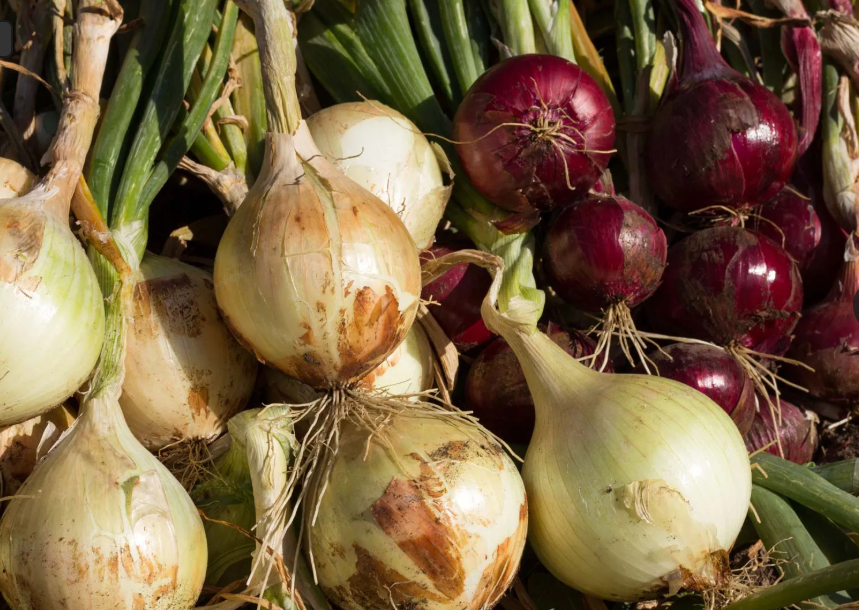
Europe : Organic GMO-free :IFOAM
Resolution of the organic movement in favour of a system-based
approach of innovation and sustainability – Keep Organic GMO-free.
Resolution from the European organic food and farming movement, adopted at IFOAM Organics Europe General Assembly on 21.
The European organic agricultural movement re-affirms its position that the organic production process should remain free of Genetically Modified Organisms (GMOs) in the future, including GMOs derived from New Genomic Techniques (NGTs). Organic breeders, farmers, processors, certifiers, traders, and retailers demand the preservation of their freedom of choice to remain GMO-free. To that end, the principle of labelling and traceability enshrined in the current legislation, which allows for the identification of GMOs throughout thesupply chain, must be maintained and applied to all NGTs.
Notably, genetic engineering is used to legitimise patents on seeds and animals. Exempting genetic material protected by a patent from traceability would expose all operators in the food supply chain to significant legal uncertainty as to what they can or cannot do with the plants and animals they work with due to patent infringement concerns. The increasing number of patents on specific traits and genetic material is a threat to the
innovative European breeding model, which relies on lighter forms of intellectual property rights that allow for the circulation of genetic material. This would lead to a harmful concentration and corporate control in the seed sector connected with business models from the chemical industry.
The European Green Deal, the Farm to Fork, and the EU Biodiversity Strategies rightfully put organic farming at the core of a transition to sustainable food systems, with a target to expand European agricultural land under
organic production to 25%. This is a welcome and necessary recognition of the environmental benefits of organic farming, for less dependency on inputs for farmers, and a resilient food supply for our society.
The organic movement strongly condemns the attacks against the Farm to Fork Strategy and the misleading claims that reducing the use of synthetic pesticides and restoring nature would not allow Europe to ensure its food security. With smart changes in land use and agroecological innovation, combined with a shift in diets and
types of production, European farmers can produce sufficient food while safeguarding natural resources.
A healthy environment with a prospering flora and fauna above and below the soil is one of humanity’s most precious goods and the bedrock of our food system. We are its beneficiaries, tasked with responsible stewardship towards nature. This also includes the application of the precautionary principle, and the principle of care, health, ecology, and fairness rooted in holistic, agroecological approaches.
To make our food systems truly sustainable, we need to transition away from input-intensive, short-term fixes, which include the promotion of specific technologies with unproven benefits and potential unintended effects and risks. Genetic engineering with its currently still empty sustainability promises exhibits a narrow, and short-
term view of the complex challenges of food systems. A focus on specific genes or traits does not account for the importance of interactions between crops with their environment and geophysical properties, including soil health, and symbiotic relationship with other species. This understanding of agricultural systems is not the type of innovation that Europe so desperately needs in the face of various environmental challenges.
Contrarily, organic farming consistently delivers resilient agroecological systems, taking into account the complexity of interactions in nature. Organic agriculture has proven benefits for biodiversity, climate change mitigation, animal welfare, and many other environmental and social challenges. The organic movement has been for decades a main driver for nature-based regenerative systems of agroecological innovation. The EU has a leading position in the whole world in the development of an organic agri-food system, with policies enabling competitive practices for organic and GMO-free feed and food. Following the road of GMO exporting countries
would entail losing this leading position in organic production and agroecological innovation.
Organic operators want to continue to fulfil their commitment towards consumers to guarantee a GM-free production process. Consumers are largely and rightfully still sceptical of the benefits of new GMOs. A potential deregulation of certain NGTs would threaten consumers’ confidence in the integrity of the organic food supply chain, and taking away consumers’ right to information on the use of NGTs would undermine confidence in the EU decision-making process.
The Organic movement has severe concerns about the potential exemption from the EU legal framework on GMOs of so-called “conventional-like” NGT crops, which would exempt them from identification and traceability.
This would de facto, legally speaking allow the use of these NGTs in organic production, without providing legal and technical means to identify these products. This poses a threat to the right and freedom to farm without these techniques and to the integrity of organic products.
Importantly, the cumbersome burden of ensuring GM-free production must not fall on operators who do not wish to use NGTs, as this would significantly hinder the development of organic agriculture in the European Union.
European Union policies should focus on resilient agroecology with a systemic understanding of sustainability.
Promises of expected benefits of NGTs do not justify watering down the successful EU precautionary principle and EU standards on environmental protection and farmer and consumers’ choice.
Thus, the organic movement calls for the maintenance of a system of identification and traceability, so that organic and conventional operators have the right and freedom to continue producing GM-free throughout the entire supply chain. -

Nepal’s First National Yak Day: Working together to protect the guardians of the high Himalaya
Kathmandu April 20, International Centre for Integrated Mountain Development (ICIMOD) Director General Pema Gyamtsho Release a press statment and said happya day of first yak on ocasssion of yak conference 2025, organizing conference of first time in Nepal, he said.
,.Today marks a historic and heartfelt moment for Nepal and for all those who call the mountains home. Nepal has made history as the first yak range country – or country in which yaks are found – in the Hindu Kush Himalaya to declare a national day dedicated to this magnificent species of long-haired domesticated cattle. This is a proud and timely recognition of the immense cultural, ecological, and economic value of yaks in our mountain regions.
In 27 mountain districts across Nepal, Indigenous Peoples and Local Communities – particularly Sherpa, Tamang, Thakali, Rai, and Limbu – have nurtured and protected yak herding traditions for generations. These communities are the backbone of mountain agropastoralism – which combines growing crops with raising livestock – their lives deeply intertwined with the rhythms of transhumance, the seasonal movement of livestock across mountain pastures. This unique system, recently inscribed by UNESCO as Intangible Cultural Heritage, is not only vital for food and livelihood security, but also for the sustainable management of fragile alpine ecosystems.
Yak: more than a mountain animal
Yaks are a lifeline for the people of the mountains. They provide meat, milk, fibre, manure for fertiliser and draught power for agricultural tasks such as ploughing, in some of the world’s most challenging terrains. They play a vital role in the high mountain communities – not just as a source of sustenance, but as a keystone of cultural identity and socio-economic resilience. Their hybrids have enabled access to wider resource areas across altitudinal gradients, helping agropastoralists adapt to their mountain environments. The ‘folk taxonomy’ – or the way people name and organise these generational hybrids is a fascinating expression of deep Indigenous knowledge – scientific, spiritual, and cultural all at once.
In many respects, the yak is an iconic animal and can be described as both the ecological and cultural architect of the Himalaya. Yak herding is deeply embedded in the traditions, festivals, and spiritual practices of Himalayan communities. Conserving yak is not only about protecting an animal – it is about safeguarding mountain livelihoods, Indigenous knowledge, and fragile ecosystems in the Hindu Kush Himalaya (HKH).
However, yak herding livelihoods are increasingly under pressure.
Climate change, shifting socio-economic patterns, and increasing restrictions on traditional mobility have placed immense pressure on yak herding systems. Rangelands are degrading. Genetic erosion is on the rise due to reduced cross-border exchange. And yet, the solutions are within reach – if we act together.
ICIMOD’s commitment to yak and rangeland resilience
At ICIMOD, we are proud to support the revitalisation of yak-based agropastoralism. Our work includes:
•Formation of the Nepal Yak Chauri Farmers’ Federation, a national platform uniting district yak networks to amplify herder voices. We have established a similar federation in Bhutan and are planning new federations in Pakistan and India, building a regional network of yak herders across the HKH.
•Supporting national partners to develop evidence-based policies and institutions for managing these lands to provide multiple benefits – livelihoods, carbon sequestration, water provisioning, biodiversity, and cultural tourism.
•Conducting dietary research to understand the nutritional needs and improve productivity of yaks in Bhutan, India, Nepal, and Pakistan.
•Addressing the seasonal feed scarcity, piloting winter fodder development initiatives to improve year-round nutrition for yaks.
•Mapping grazing areas and understanding pastoral mobility patterns, which are crucial for sustainable rangeland management and climate resilience.
•Piloting rangeland restoration activities to enhance pasture quality, support biodiversity, and secure the long-term viability of yak herding systems.
On this first National Yak Day, I call on all of us – policymakers, researchers, development partners, and mountain advocates to celebrate, support, and sustain yak herding in the HKH. Let us listen to the voices of herders, invest in their knowledge, restore their rangelands, and ensure that future generations continue to witness the majestic silhouette of a yak on a mountain ridge. ICIMOD stands committed to supporting our partner countries in promoting sustainable, climate-resilient agropastoralism in the high mountains of the HKH.
Nepal has shown the way by dedicating a day to honour the yak. Let this be the beginning of a regional movement to recognise and protect the high-altitude heritage of the HKH.
Let Nepal’s leadership in declaring this National Yak Day inspire the region. It is time to elevate the yak – a symbol of resilience, heritage, and harmony with nature – to its rightful place on the sustainable development agenda.
Let us not relegate the existence of this majestic animal and the beautiful landscape it occupies to photographs and paintings for future generations of the Himalayan communities. -
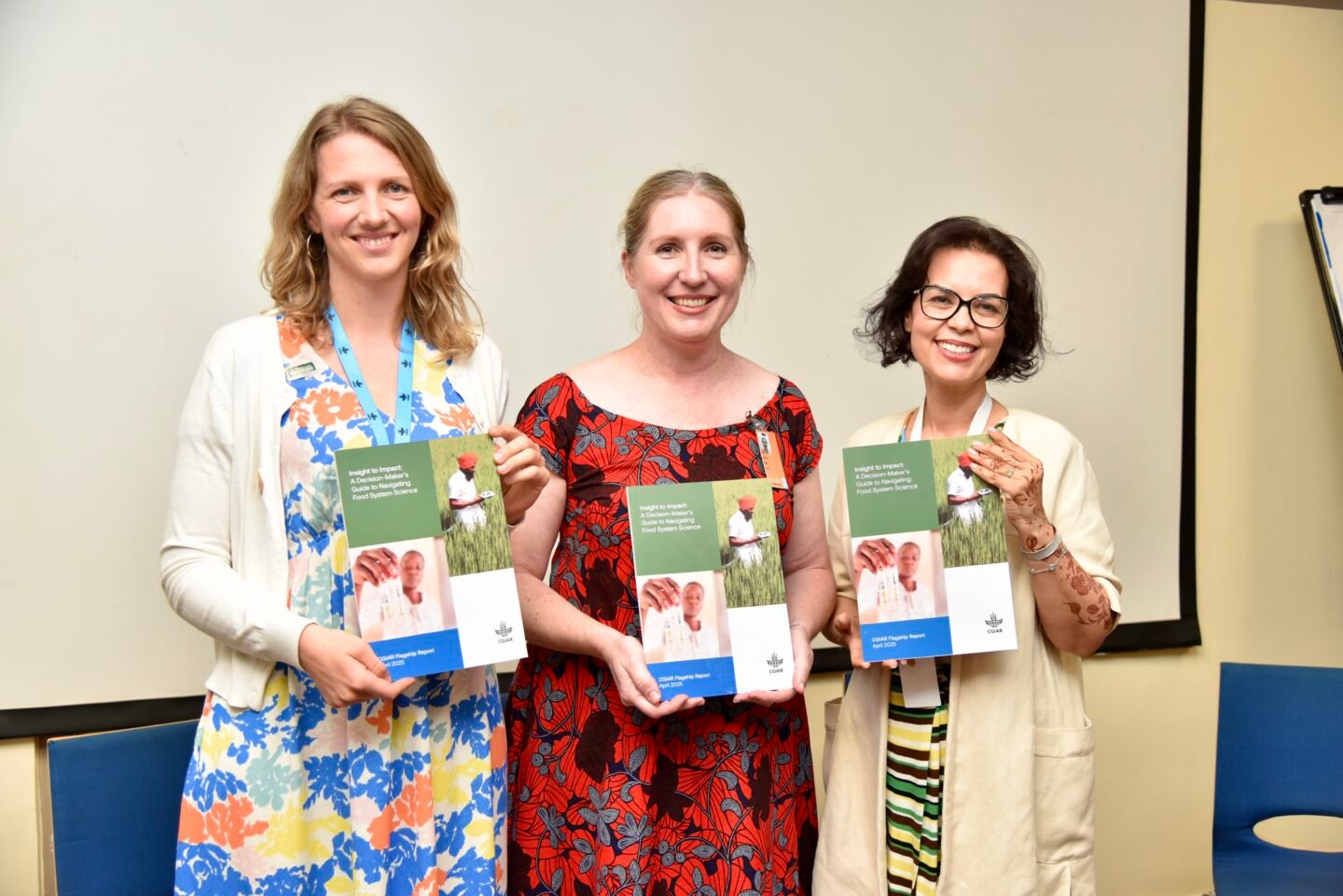
CGIAR Released new Flagship Report into Impact in Food Systems
Kathmandu April 14, With food systems under strain from climate change, conflict, biodiversity loss, and hunger, CGIAR has launched its inaugural flagship report, Insight to Impact: A Decision-Maker’s Guide to Navigating Food System Science at CGIAR Science Week in Nairobi, Kenya.
The new report hand-selects data and innovations from among decades of research. It presents science as practical, ready-to-use guidance for decision-makers and investors working to build more resilient, sustainable food systems-especially in low- and middle-income countries.
Policy is influenceable, but what I hear from many decision-makers is that they are often missing the right data, the information needed for policy-along with clarity and pragmatism,” said Ismahane Elouafi, Executive Managing Director of CGIAR, in her opening remarks at the launch event. “This is very clear in the report, so the next steps will be to engage deeply with policymakers so we can really turn insights into impact.”
Actionable science for real-world choices
From helping farmers adapt to climate change to expanding access to nutritious food and sustainable livelihoods, the report answers 20 urgent questions frequently posed by policymakers. It also includes 20 practical solutions, each backed by science and tested in real-world conditions.
Among the featured case studies:
“Improved crops and livestock breeds deliver triple wins-nutrition, income, and climate resilience. EnviroCow helps farmers in sub-Saharan Africa reduce feed costs and emissions while boosting earnings, while zinc-rich wheat in Pakistan now reaches over 100 million people annually, raising zinc intake by 21% and addressing widespread deficiencies among women and children.
“Bespoke fertilizer advice in Ethiopia, where farmers increased crop yields by up to 29% and incomes by up to USD 270/ha by using landscape-specific guidance tailored to slope, soil health, and climate. The initiative now spans 23 districts and continues to scale.
“Smart rice water management in Vietnam, which trained over 33,000 farmers in climate-smart techniques that reduce methane emissions and water use without lowering yields. The alternate wetting and drying technique has now been integrated into Vietnam’s national climate policy.
Case studies include implementation resources such as expert contacts, how-to guides, impact studies, and tools to support scaling.
Global challenges, local solutions
CGIAR is the world’s largest global agricultural innovation network. With 10,000 staff working in 80+ countries, across 3,000 partnerships, CGIAR is uniquely positioned to support implementing innovations and using data and evidence to transform food, land, and water systems. This inaugural flagship report was spurred through support from the German Federal Ministry for Economic Cooperation and Development (BMZ) with Deutsche Gesellschaft für Internationale Zusammenarbeit (GIZ).
More than 70 decision-makers across government, regional bodies, and the private sector contributed to the report, identifying seven key needs-from a request for more pragmatic and clear science communication to stronger alignment with national strategies.
The report is tailored to decision-makers across sectors-including those in agriculture, climate, finance, and health-and emphasizes interdisciplinary, country-relevant responses.
To support its science-to-policy efforts, CGIAR also launched its Insight to Impact Policy Champi
ons Network, a group of partners and policy influencers who will work to ensure the scientific insights shape action on the ground.
“The future of farming is here,” said Lusike Wasilwa of Kenya Agricultural and Livestock Research Organisation (KALRO), a partner and leader in the agricultural innovation space. “We have to work and partner together to ensure we are reaching the smallholders and that we’re developing data to inform policy.”
From science to action
The launch event, hosted at the UN Continue pages 36
CGIAR Release ……..Campus in Nairobi, brought together leaders from across Africa, Asia, Latin America, and the global scientific community. Speakers emphasized the importance of partnerships, long-term investment, and putting evidence into formats that meet the needs of those shaping food systems policy.
“We have ongoing challenges all around the world with the triple conundrum of poverty, inequality, and unemployment, so our ability to use the best science, technology, and innovation to inform decision-making at all levels is absolutely paramount,” said Dhesigen Naidoo of CGIAR’s Integrated Partnership Board.
Naidoo also called on those using or involved with the report to be the “ambassadorial community… the people that organize for it to take fire in a very real way. And we have to be sincere to the notion of co-creating the solutions.”
Looking ahead, CGIAR plans to tailor offshoot products to local needs. And future editions of the report series will tackle emerging challenges and prepare decision-makers for specific global and regional processes, continuing to build bridges between science and decision-making. -
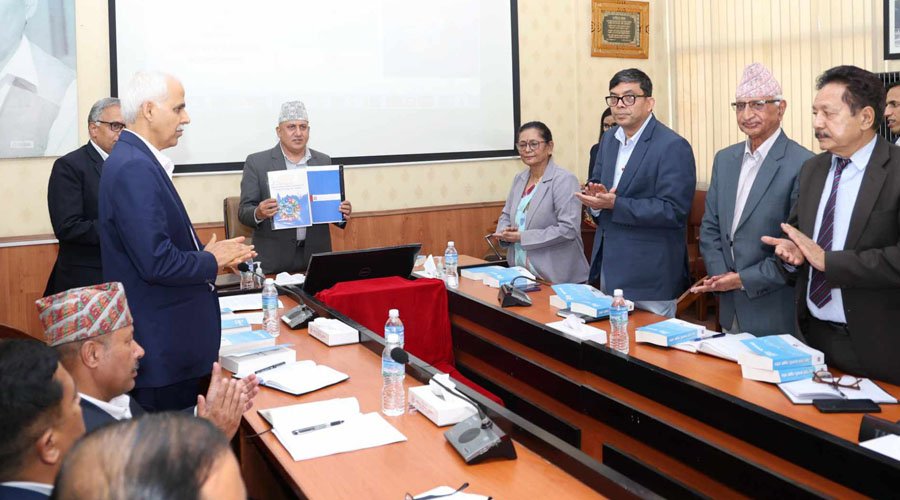
Harvesting Collaboration for Food Security. CGIAR Science Week Closes.
Kathmandu April 11, Nairobi, Kenya: After a remarkable week of science, innovation, and cementing of partnerships, CGIAR’s inaugural Science Week wrapped up at the official closing ceremony led by Ismahane Elouafi, Executive Managing Director, CGIAR, and Eliud Kireger, Director General, Kenya Agricultural & Livestock Research Organization (KALRO).
“Over the past days, we’ve explored groundbreaking research, forged new collaborations, and reaffirmed our commitment to creating sustainable, resilient, and equitable food systems. The dialogues and connections fostered here will undoubtedly propel our shared mission forward,” said Ismahane Elouafi, Executive Managing Director, CGIAR
CGIAR Science Week, co-hosted by KALRO, underscored the transformative power of science when coupled with strategic partnerships. Throughout the event, collaboration took center stage as participants shared technologies and insights and discussed the further development of ground breaking innovations that have the potential to revolutionize agri-food, land, and water systems – making them more resilient, sustainable, and equitable. The discussions and showcasing of science that took place not only illuminated the path forward but reaffirmed a collective commitment to a food-secure future.
“Through frank debate and presentation of pioneering innovation, Science Week highlighted both the successes we can build on, and the gaps that we are now better positioned to address. The conversation doesn’t end here. This is just the beginning.” Eliud Kireger, Director General, KALRO.
Over the week, several key achievements took place:
“The CGIAR Research Portfolio was launched – an ambitious and collaborative endeavor that builds on 50 years of science and partner networks to shape and focus our vision more sharply than ever through clear parameters and targets.
“CIMMYT and IICA signed an agreement that leverages science, technology, and collaboration to accelerate agricultural innovation and economic growth in the Americas by supporting farmers and agribusinesses.
“CIP and KALRO signed a Licensing Agreement to transfer biotech for a potato resistant to late blight, reducing the need for chemical inputs while improving productivity and resilience. Significantly, it puts the development of future innovation into the hands of farmers themselves.
“The IWMI Strategy 2024 – 2030 was launched – a roadmap for research and innovation that will enhance water security throughout East Africa
“CGIAR and AGRA signed an MOU to accelerate agricultural innovation and delivery across Africa, scaling ideas, strengthening country systems, and providing smallholder farmers with new and affordable technology.
“The CGIAR Flagship Report was released. Designed for decision-makers in low- and middle-income countries and regional bodies engaged in national, regional, and global processes, the report turns CGIAR science into actionable, evidence-based solutions to support better decisions and smarter investments.By building on the momentum of Science Week, CGIAR will drive tangible benefits for communities worldwide by strengthening ties with partners and funders, ratifying new agreements, and developing and scaling the innovations presented.
“Strategic gatherings like Science Week help chart pathways for how we build sustainable and resilient food systems in the future. With one-third of the global population remaining food insecure, and mounting challenges ahead, science must be at the heart of accelerating the urgent solutions we seek,” said H.E. Amina J. Mohammed, Deputy Secretary-General of the United Nations
However, a key topic throughout the week was the need to sustain and grow investment streams for agricultural research amid a challenging funding landscape. Numerous studies, including those carried out by CGIAR, clearly demonstrate that agricultural research increases production, efficiency, and sustainability. Yet, often, science budgets are the first to be cut during periods of economic uncertainty.
“Every $1 invested in CGIAR delivers $10 in benefits. Be it for the sustainability of our planet or out of simple economic sense, investing in CGIAR Centers and working ever more closely together is one of the smartest investments we can make. In our future, for our future,” said Juergen Voegele, Vice President for Sustainable Development at the World Bank?.
The world is at a crossroads and cannot meet complex and interconnected challenges without transforming food, land, and water systems. Yet with the right investment, agriculture, as outlined in the CGIAR Investment Case, has the potential to be humanity’s biggest solution to global agri-challenges. Investments of $4bn over 2025-2027 are urgently needed to unlock the power of science and innovation to tackle climate change, increase productivity, and help address the pressing challenges of today.
By gathering stakeholders, policymakers, experts, innovators, and farmers in one place, Science Week made great inroads into advancing these vital themes. At a time when global food security and nutrition is under grave threat, Science Week reaffirmed that science, when guided by purpose and delivered through strong partnerships, has the power to transform our food, land, and water systems to tackle agricultural challenges, proving that strength lies in collaboration to turn insights into action, and action into impact. -
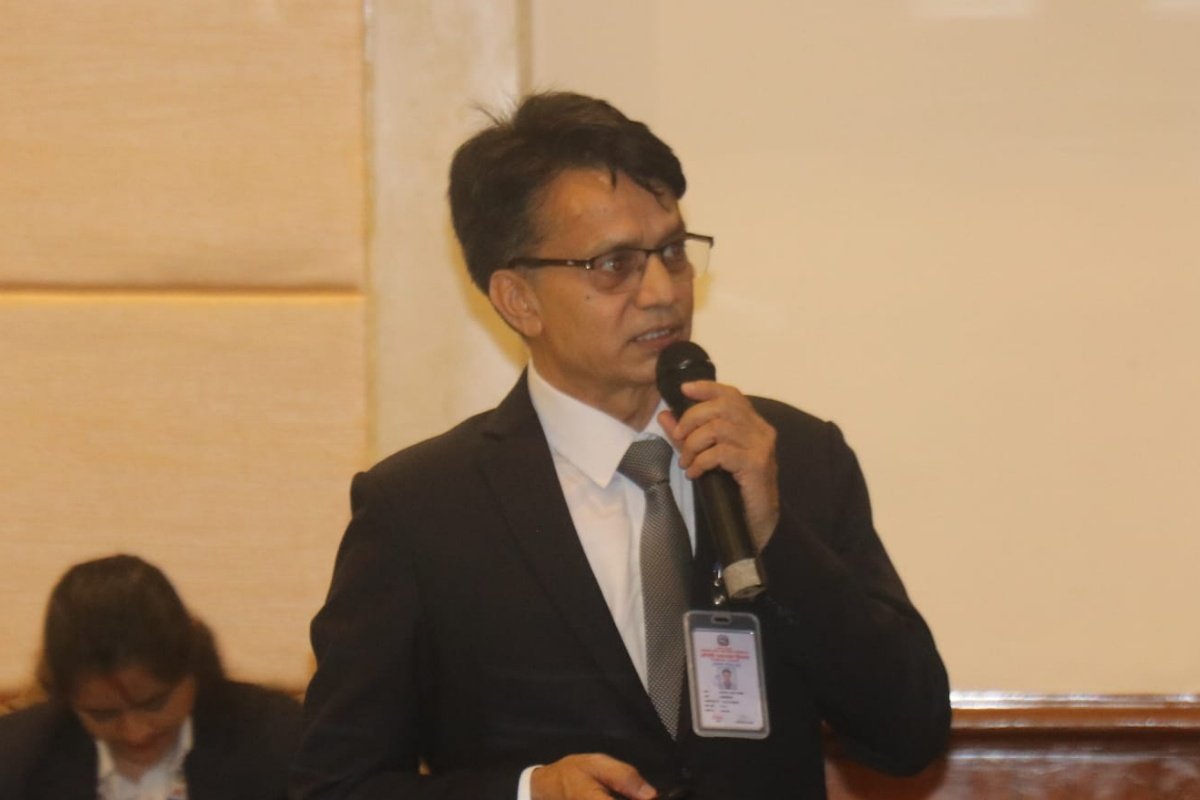
FAO-China-Uganda South-South Project Creates New Farming Opportunities
Kathmandu Aprill 11, Nestled in the lush hills above the northern shores of Lake Victoria, a new industry is emerging from its cocoon. Waiswa Aggrey Mubeerwa, its young manager, is waiting for it to mature so that he can start sending its products to distant markets.
Waiswa was hired by the Seres Textile Company Limited to oversee its silk farming facility in Mukono, a district in Uganda about an hour’s drive east of the capital, Kampala. Built in 2019, the company’s huge warehouse stores a growing number of silkworms and cocoons. Waiswa is waiting for an extracting machine so that Uganda’s silk-exporting business can begin.
Sericulture is just one of the many initiatives of a South-South Cooperation (SSC) project implemented by the Food and Agriculture Organization of the United Nations (FAO) in collaboration with the Government of Uganda and the Ministry of Agriculture and Rural Affairs of China.
Uganda offers the ideal temperature and humidity for growing mulberry trees, whose leaves are the only food silkworms will eat. In addition to a few acres of land to plant the trees, a farmer starting a silkworm business will need wooden rearing beds for the silkworms and a warehouse capable of maintaining the indoor temperature at around 27 degrees Celsius.
Once the mulberry trees have grown and the silkworm larvae have been acquired, a lucrative business can begin: A kilogram of silk can easily fetch USD 50 in China. In fact, local farmers can earn up to 10 times what they would earn growing traditional crops such as maize.
By the end of 2024, the project had distributed approximately 200 000 mulberry cuttings to 35 farmers and had trained 44 farmers in the art of producing the cocoons from which silk is spun. This training involved guiding farmers through the larvae’s growth stages, providing feeding advice and giving information on the importance of maintaining a clean and well-ventilated environment.
Uganda offers ideal conditions for growing mulberry trees, whose leaves are the only food silkworms eat.
One of the first Ugandans to take advantage of this new opportunity was Wambedde Simon Waluba, a 24-year-old graduate from Makerere University in Kampala, whose family owns 14 acres of prime mulberry land.
The land had been unproductive for years, but he spotted an opportunity when he heard about mulberry trees and silkworms.
The eldest child in a family of four brothers and four sisters, Simon studied Social Sciences because he dreamt of becoming a manager or working for a non-governmental organization. But when his family hit on hard times, he decided he would do anything he could to help.
“They told me I can make good money out of this business. I needed to find ways to help my family financially; that’s why I got interested in this business,” he says.
Simon was then trained by Waiswa Aggrey, the Seres Textile Company’s young manager, who in turn was trained by the silkworm experts sent from China as part of the SSC project in Uganda.
Through the project, Simon received mulberry seeds and two boxes of silkworm eggs and was shown how and when to grow the trees and feed the silkworms the mulberry leaves. He has now been supplying silk cocoons to the company since 2020.
Like Simon’s, dozens of silkworm farms are sprouting across Uganda, with the FAO-China-Uganda SSC project providing assistance in procuring the worms and the necessary technical knowledge required to nurture the silkworm cocoons from which the silk will be made.
With silkworms, local farmers can earn up to 10 times what they would earn growing traditional crops such as maize from the same plot of land.
South-South Cooperation :
The FAO-China-Uganda South-South Cooperation (SSC) project is designed to increase the productivity of Ugandan farms by providing farmers with training, technology and technical assistance in a wide range of areas, from aquaculture to sericulture, crop production to animal husbandry.
With more than 70 percent of the population dependent on agriculture, either directly or indirectly, transforming the sector – from subsistence to commercial – is crucial for uplifting many out of poverty, says Peter Muyimbo, Assistant National Project Coordinator at Uganda’s Ministry of Agriculture, Animal Industry and Fishery.
The SSC project has also boosted Ugandan productivity in other agricultural areas, including poultry, animal husbandry, rice, foxtail millet and fisheries production, with remarkable success. It originally planned to reach 9 600 beneficiaries. However, 70 000 farmers across Uganda have already benefitted from the project, either directly or indirectly.
By bringing together FAO, China and Uganda, the SSC project “contributes to food and nutrition security, creating decent jobs and improving the livelihoods, especially of the marginalized, women and youth,” Peter says.
This SSC project is now the longest-running under the FAO-China South-South Cooperation Programme, with China loaning a total of 56 agricultural experts to Uganda since 2012.Organic
-
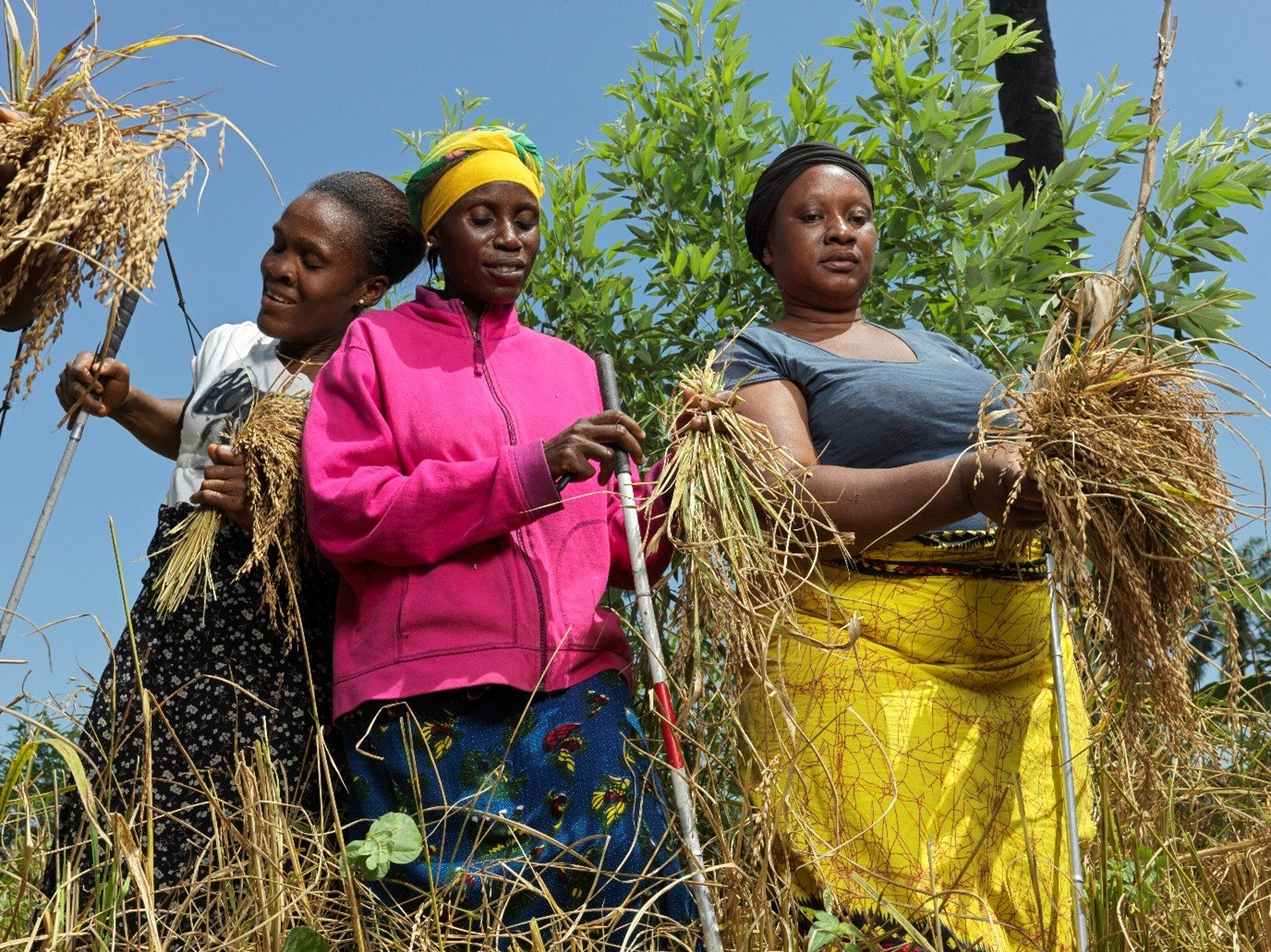
Rural Liberians are Transforming Agriculture and Changing Lives
Kathmandu Aprill 8, Rural Liberians are transforming agriculture and changing lives
Liberia West and Central Africa Rural businesses Nutrition Livelihoods
Although two thirds of Liberians are involved in agriculture, much of their food is still imported from abroad. Two decades after a devastating civil war, Liberia has progressed considerably, but remains heavily dependant on international assistance.
IFAD is working closely with the Government of Liberia, rural Liberians and international partners to transform the sector that lies at the heart of economic transformation: agriculture.
STAR-P is central to this collaboration. This programme is co-financed by IFAD and the World Bank through US$51.71 million in grants and highly concessional loans, along with in-cash and in-kind contributions by project participants and the private sector. STAR-P works with rural producers to introduce modern business and agricultural practices, create connections to markets and develop vibrant agribusinesses that transform the agricultural landscape.
Through greater agricultural production and prosperity, small-scale farmers and rural entrepreneurs can build the incomes and food security they need to withstand economic shocks.
For 35-year-old Hawa in the Lofa county of northern Liberia, this collaboration has been life-changing. “I felt lost and alone before the STAR-P project,” she says. A visual disability forced her to drop out of school and she struggled to earn a living by selling drinking water at a local market.
Hawa has set up a small business with her new income from rice production.
This changed when Hawa became one of 55 visually impaired people who united to improve their farming and marketing practices through the Lofa United Blind Association. The association members adopted improved agricultural technology with support from STAR-P, including training, inputs and quality seedlings to grow rice.
As a result, these members tripled the area they cultivate. They now produce enough to feed their families with a surplus to sell in the market. Hawa earned enough to reinvest her funds in a small shop, which gave her an added income stream.
Thanks to her facility with numbers, Hawa is now the chair and financial secretary of the farmers’ association. She has not only managed to send her three children to school, but also earns enough that she has returned to university herself. “I want to be a big accountant in the world,” she says.
Hawa works with other visually impaired small-scale farmers through the Lofa United Blind Association.
Making a healthier future
While Hawa is just starting her entrepreneurial journey, 29-year-old Mariam has a business that received an invaluable leg up from STAR-P. Back in 2021, she sold fruit salad and hand-squeezed juice to commuters from a small kiosk in Monrovia, the Liberian capital.
Mariam saw how expensive healthy eating was for many Liberians and dreamt of reaching more people. She finally had the chance to pursue her ambitions when, while browsing the internet, she learned about a grant competition administered by STAR-P to revitalize businesses in agricultural value chains during the COVID-19 pandemic. She applied and was awarded funds to purchase a blender and juicer.
Mariam has gone from selling her juice in one small kiosk to opening five new locations.
“Previously, I had to squeeze juices manually, which was time-consuming and inefficient,” she says. “Buying this equipment sped up my work and improved my customer service.”
Now able to serve more customers, Mariam’s business grew. She moved her stall to a new location near a prestigious hotel, where she marketed her healthy juice made from locally sourced ingredients. In 2023, Mariam received another grant from STAR-P that enabled her to expand to five locations with a team of 14 staff members, most of them women.
Mariam’s business has not only brought prosperity to her and her team. It has also created a reliable market for 20 farmer groups in three counties, from which she sources pineapples, cucumbers and watermelons. She’s now looking to expand further and market her juices to students in rural counContinue page 28
Rural liberians …….
ties. By investing in Mariam’s vision, STAR-P has strengthened an entire value chain.
Mariam has hired 14 staff members, most of them women, to support her growing juice business.
Mariam and Hawa are just two of over 40,000 small-scale farmers and rural entrepreneurs who have benefited directly from STAR-P, which built their capacity through agricultural assets and services, post-harvest processing facilities and improved agricultural technology. By growing their agribusinesses, these producers are not only increasing their own incomes and building resilience, but also ensuring that all Liberians have access to locally produced and nutritious food.